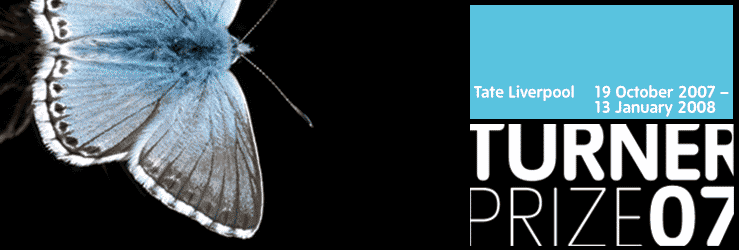
겨울 영국행, 괜챦은 여행이 되겠다...
떠오르고 있는 영국,
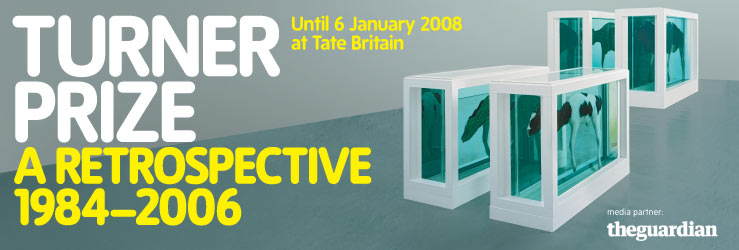
The Shortlisted Artists
The four artists who have been shortlisted for the Turner Prize 2007 are Zarina Bhimji, Nathan Coley, Mike Nelson and Mark Wallinger.
Zarina Bhimji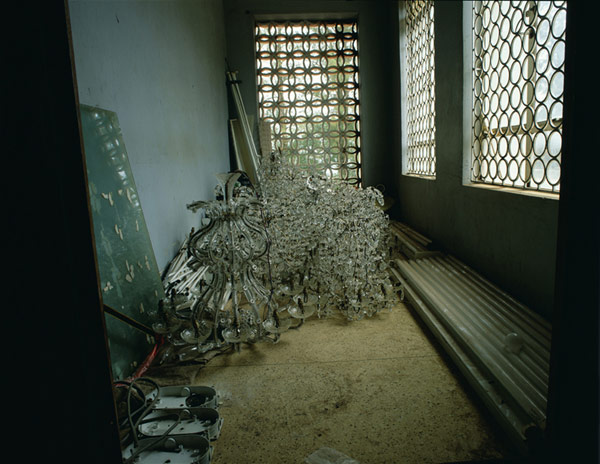

 © Ian Berry
© Ian Berry
1963 Born Uganda
1983 – 1986 Goldsmiths College, London
1987 – 89 Slade school of Fine Art, London
Lives and works in London.
Over the last three years Zarina Bhimji has travelled extensively throughout India, Zanzibar and East Africa. Immersing herself in their discrete yet intersecting histories she took numerous photographs, studied legal documents, conducted interviews and read the biographies of policy makers in the shaping of British power within those countries. Although her work always begins with such extensive research, the knowledge she accumulates is ultimately abandoned in her films and photographs, as facts and figures give way to instinct and intuition.
Bhimji’s photographs capture human traces in landscape and architecture. Walls are a recurring motif, attracting her through their absorption of history as they become a record of those who built, lived within and ultimately abandoned them. Despite a conspicuous absence of the body, the photographs emit a human presence. Reference to it is sometimes explicit – a row of guns awaiting use in Illegal Sleep, yet sometimes only implied – the hanging, disconnected and electrical wires in my Burnt my heart.
Waiting, made in a factory used to process Sisal, has an abstraction that hovers somewhere between film and painting. The washed-out colour of the hair-like material, the light, and the interior of the factory create a saturated monochrome that, combined with the film’s soundtrack, becomes immersive. Recorded on a 35mm film and then transferred to high-definition video, every nuance of the building is captured.
Bhimji captures her sites with relentless formal concerns intended to convey qualities of universal human emotion and existence – grief, longing, love and hope. Concrete places become abstract sentiments as the physical rhythms of landscape and architecture become psychological.
Zarina Bhimji is nominated for her exhibitions at Haunch of Venison, London and Zurich.
Nathan Coley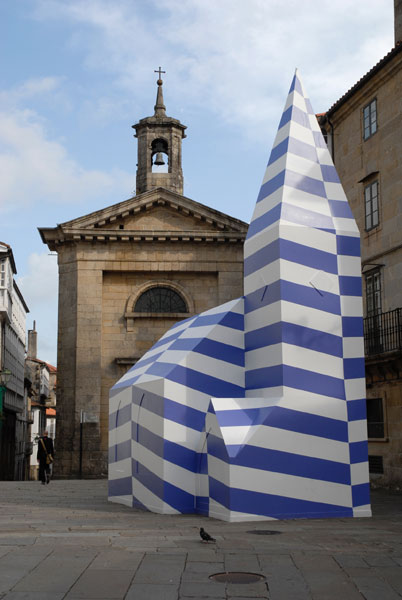

 © Jane Barlow
© Jane Barlow Meet the Artist: Nathan Coley
Meet the Artist: Nathan Coley
Tate Shots
1967 Born Glasgow
1985-9 Glasgow school of Art, Glasgow
Lives and works in Glasgow
Nathan Coley explores how power can be inferred through architecture and public space. Underpinned by research, his aim is to facilitate an increased physical and mental engagement with our environment. To enter and exit the installation we step over sculptures, bounding the space and designating a threshold, a transformative state of being. Made from oak, rich with moral associations, the works also register minimalist sculpture.
Annihilated Confessions present exquisite framed photographs of confession boxes obliterated by black spray-paint, referencing street graffiti and censorship. By partially glimpsing the photographs beneath the surface we are simultaneously offered and denied access to the image. Like absolution, the works examine how power can be inferred whilst not, in fact, being visible during correspondence. Referencing a famous song of English patriotism, his art piece; Hope and Glory presents us with a generic English house, hand-built and imbued with a sense of incompleteness. Its physical status is unclear. The work explores how ideas of Englishness become entrenched in national memory, informing territorial identity.
In THERE WILL BE NO MIRACLES HERE the glitzy typeface jars with the folksy light bulbs, the prodigious title simultaneously forbidding and admitting the possibility of divine intervention. It derives from a historical event where a King, in effect, imposed state jurisdiction over the ‘higher’ law of God. Opening up a range of possible readings, in Coley’s work truth and belief are considered unstable and relative. His work proposed strategies for us to engage more expansively with the world in which we live
Nathan Coley is nominated for his exhibition at Mount Stuart, Isle of Bute, the public installation Camouflage Church, Santiago de Compostela, Spain and his contribution to the group exhibition Breaking Step - Displacement, Compassion and Humour in Recent British Art at the Museum of Contemporary Art, Belgrade, Serbia.
Mike Nelson

 © Mike Nelson
© Mike Nelson  Meet the Artist: Mike Nelson
Meet the Artist: Mike Nelson
Tate Shots
1967 Born Loughborough
1986-90 Reading University
1992-3 Chelsea College of Art & Design, London
Lives and works in London
In the mid-1990s Mike Nelson invented the Amnesiacs, a non-existent biker gang composed of Gulf War veterans. With the artist the gang made work through ‘flashbacks’ – ideas that recognise no limits, providing a library of information that became the basis of many of his constructions of that period. Just as Soviet writers once used the genre of science-fiction to bypass the censors, Nelson’s Amnesiacs initially gave him the mechanism to circumvent the prevailing taste of art production and criticism which had emerged from a period of intense theorising in the 1980s. Nelson favours intuition over rational interpretation, making work that forces us to complete it by connecting our knowledge and experience to the forms he and his mythical associates present.
Here, Nelson turns once more to the Amnesiacs for their help in building a shrine. The materials and references used to construct it, provided by further ‘flashbacks’, are elevated by their devotional context yet remain largely indefinable. As with his previous work, the use of entrances, exits and doorways is crucial in the metaphoric connotations that they bring. The sand functions in a similar way, alluding to the vast expanses of other possible places, its imagery reflected into infinity through the mirrors which enclose it. The sand and mirrors perhaps bring about the work’s only recognisable allusion, echoing the minimalist cubes of Robert Smithson and Robert Morris. Yet where their mirrors looked outwards, those of the shrine look towards each other with an introspective ambiguity.
Mike Nelson is nominated for his exhibitions AMNESIAC SHRINE or Double coop displacement, Matt’s Gallery, London and Mirror Infill (2006), Frieze Projects, Frieze Art Fair, London.
Mark Wallinger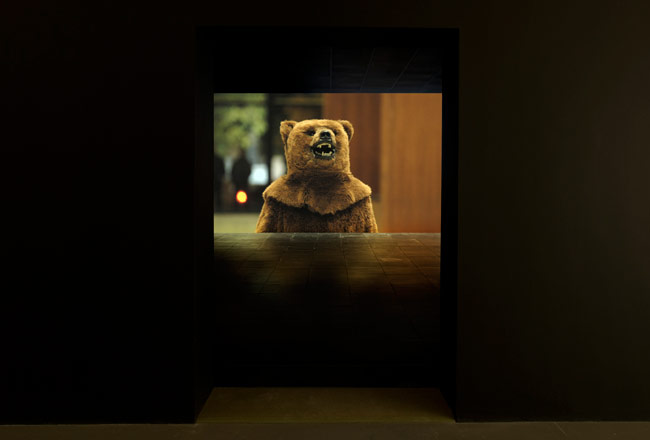

 © Charlie Hopkinson
© Charlie Hopkinson  Meet the Artist: Mark Wallinger
Meet the Artist: Mark Wallinger
Tate Shots
1959 Born Chigwell
1978-81 Chelsea School of Art, London
1983-85 Goldsmiths College, London
Lives and works in London
Mark Wallinger’s work is noted for its succinct social commentary and political resonance. His early work explored the values of contemporary British society, in particular national identity. His focus subsequently expanded to address themes of death and religion. Despite dealing with such expansive themes, his work is often characterised by a lightness of touch that belies the serious and multifaceted nature of the subject matter.
Sleeper records a live performance in which the artist, alone and dressed in a bear suit, occupied Berlin’s Neue Nationalgalerie for ten consecutive nights. The museum’s location enables a diversity of themes to converge, creating a uniquely complex and unsettling work. The bears in the nearby historic Zoo are doomed never to reproduce, the possibility of their procreation in captivity preordained and controlled by man. Fortified by a culture of surveillance and paranoia, Berlin during the Cold War was physically, politically and socially divided. The ‘sleepers’, or double agents, blended into their surroundings by sporting plausible disguises. Wallinger, a Briton in a foreign city, disguises himself as a bear - the heraldic emblem of Berlin - an appropriation in which he becomes both ‘bear’ and simultaneously not ‘bear’.
Wallinger has described how the idea of a divided realm exists within his subconscious, shaped by a German fairy tale in which a prince is transformed into a bear. In Sleeper the Marxist dictum in which history returns first as tragedy then as farce is wryly expressed. Allegory, the repression of memory, and the mutability of national identity combine to offer a meditative exploration of the language of representation, as well as an examination of the nature of perception itself.
Mark Wallinger is nominated for his exhibition StateBritain at Tate Britain.
'Exhibition > Installation & Sculpture' 카테고리의 다른 글
| Spectacular Craft (0) | 2008.01.17 |
|---|---|
| Shin sang ho (0) | 2008.01.10 |
| 베르너 펜톤 (2) | 2007.12.15 |
| 루이스부르주아 (0) | 2007.12.08 |
| 김승영 (0) | 2007.12.08 |




